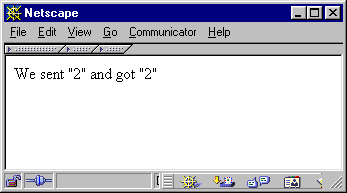| П | О | Р | Т | А | Л | ||||||||||||||
| С | Е | Т | Е | В | Ы | Х | |||||||||||||
| П | Р | О | Е | К | Т | О | В |
Поиск по сайту: Главная О проекте Web-мастеру HTML & JavaScript SSI Perl PHP XML & XSLT Unix Shell MySQL Безопасность Хостинг Другое
|
Using ExtensionsDepending on the build process you selected, you should either end up with a new PHP binary to be linked into your Web server (or run as CGI), or with an .so (shared object) file. If you compiled the example file first_module.c as a shared object, your result file should be first_module.so. To use it, you first have to copy it to a place from which it's accessible to PHP. For a simple test procedure, you can copy it to your htdocs directory and try it with the source in Прим. 46-3. If you compiled it into the PHP binary, omit the call to dl(), as the module's functionality is instantly available to your scripts.
Calling this PHP file in your Web browser should give you the output shown in Рис. 46-2. If required, the dynamic loadable module is loaded by calling the dl() function. This function looks for the specified shared object, loads it, and makes its functions available to PHP. The module exports the function first_module(), which accepts a single parameter, converts it to an integer, and returns the result of the conversion. If you've gotten this far, congratulations! You just built your first extension to PHP.
Если Вы не нашли что искали, то рекомендую воспользоваться поиском по сайту: |
|||||||||||||||||||||
